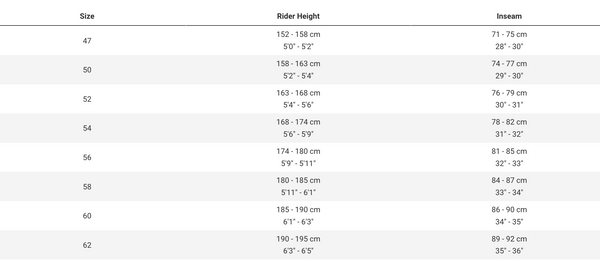NOW LIGHTER, SMOOTHER AND MORE ADAPTABLE TO VARIABLE TERRAIN, THIS ALL-NEW, READY-FOR-ANYTHING GRAVEL BIKE COMBINES ULTRA-EFFICIENT PERFORMANCE WITH NEXT-LEVEL CONTROL.
KEY PERFORMANCE FACTORS
Lightweight efficiency
New Advanced composite frame and Advanced SL composite fork save a combined 200 grams compared to previous generation. Updated geometry includes a lower bottom bracket, longer reach, and steeper headtube angle for improved acceleration and climbing.
Tuned compliance
New frame features a lower seatstay junction with smaller diameter tubes to absorb road shocks and vibrations. Contact SLR D-Fuse carbon handlebar and D-Fuse seatpost work as a system to optimize compliance without sacrificing stiffness while cornering, sprinting or climbing.
Adaptable to the terrain
A flip chip on the rear dropout adjusts the wheelbase short for quicker handling, or long for improved stability at speed. The long setting also allows for larger diameter tires up to 53mm. You can choose the included D-Fuse seatpost for maximum compliance, or switch to a 30.9mm round or dropper post.

Gravel Bikes
A gravel bicycle is a type of bicycle intended for gravel cycling, including gravel racing. They are also sometimes known as "adventure bicycles", particularly ones intended for harsher off-road terrain.
While bicycles have been used for riding on such roads since bicycles were invented, the "modern" gravel bicycle, as a category, evolved in the 2000s, adopting technology from road bicycles, cyclocross bicycles and mountain bikes. They also share many characteristics of touring bicycles, such as relaxed geometry, wide tires and wide-range gearing.

Cyclo-Cross Bikes
A cyclo-cross bike or cyclo-cross bicycle (abbreviated CX Bike or CXB) is a bicycle specifically designed for the rigors of a cyclo-cross race. Cyclo-cross bicycles roughly resemble the racing bicycles used in road racing. The major differences between the two are the frame geometry, and the wider clearances that cyclo-cross bikes have for their larger tires and mud and other debris that they accumulate.
Cyclists have been competing in races on road-going bicycles since the 19th century. Cyclo-cross emerged as a sport in its own right in France in 1902. Cyclo-cross bicycles are similar to other bicycles, but the frame geometry is closer to a mountain bike than a road racing bicycle. The top tube is often longer and closer to horizontal, and the handlebars are higher, again akin to mountain bikes. The emphasis on bicycle handling skills differentiates cyclo-cross from road racing. Cyclo-cross courses are held on a variety of terrain, including grass, mud, sand and paved surfaces.















